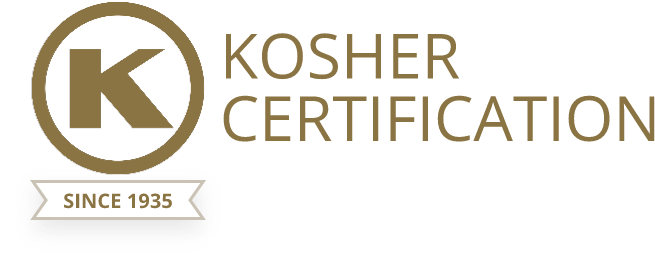Recently, the OK was approached to give a hechsher on a makeup powder that would permit use on Shabbos and Yom Tov. The topic of using colored makeup on Shabbos is discussed in Shulchan Oruch Orech Chaim, Siman 303, S’eif 25, where it is specifically stated that it is forbidden for a woman to color her face with srak (a red color) on Shabbos.
According to halacha, there are three types of coloring. The first type is coloring that lasts – for example, dyeing cloth where the color is expected to last. This is considered the primary issur of dyeing.
The second type is dyeing or coloring something that does not last, such as metal. This is also forbidden according to the Rambam, even though it does not last.
The third type of coloring is unintentional, or undesired, coloring. For example, eating strawberries and having one’s hands colored while eating is not considered coloring, as the coloring of one’s hands is not the “way” of coloring and one actually does not want the color on one’s hands.
A woman who uses “paint” (makeup) to color her face is considered coloring in the normal way, even though it does not last for a long time since, according to Shulchan Oruch, one is required to wash one’s face once a day.
The use of powder makeup is subject to much debate. According to one major rabbinic authority, powder can be permissible on Shabbos, even though it contains coloring. Since it does not really stick to one’s skin like paint, therefore, it is not even considered “non-permanent coloring.” Other rabbonim hold that only white powder is permitted. Some major authorities are even more stringent and hold that any coloring, even powder, is forbidden.
Even those who permit plain, unadulterated colored powder do so only under certain circumstances:
• The powder is not put on top of makeup that was put on before Shabbos. This is because the powder will now stick to the base and be more lasting.
• The powder is pure powder with no additives, such as oil based additives that will cause the powder to stick.
The powder submitted to the OK for certification was not a pure powder, but one with other ingredients. An OK Rabbinic Coordinator who also holds a Master of Science in chemistry investigated the ingredients and felt that some of them would indeed be considered something that would make the powder stick to the skin. In addition, the powder definitely had an oily feel when put on one’s skin.
After consultations with various rabbinic authorities, we felt the following pitfalls would be too great for the OK to certify the product:
• The present powder was not acceptable due to added ingredients.
• Even if we could get pure powder, one might use it on top of makeup that was put on before Shabbos.
• Not all rabbinic authorities are in agreement that any powder makeup is permissible.
• Ladies seeing a Rebbitzen using the product on Shabbos might come to the mistaken conclusion that other makeup is permissible.
While discussing powder makeup with my daughters, they informed me of a different type of makeup used by women today, which has a completely different “din” – permanent makeup. (Note: The issue of permanent makeup is different from the issue of “Shabbos makeup.” The halachic issues are due to two different issurim.) In fact, when I heard about it, I was shocked to hear that there are people in the frum community who use this!
There are a few different uses for permanent makeup. It can be used to permanently color the area above the browbone to look like eyebrows, or it can be used in place of eyeliner, lipliner or other areas where one would use coloring.
Below are some quotes from companies who offer this service describing the actual process:
“Permanent makeup is a cosmetic technique which employs tattoos (permanent pigmentation of the dermis) as a means of producing designs that resemble makeup, such as eyelining and other permanent enhancing colors to the skin of the face, lips, and eyelids. It is also used to produce artificial eyebrows, particularly in people who have lost it as a consequence of old age, disease, such as alopecia, chemotherapy, or a genetic disturbance, and to disguise scars and white spots in the skin such as in vitiligo.”
“In the permanent makeup process, pigment is implanted into the upper dermal layer of the skin. In order to reach this area, pigment must be implanted through the epidermis, or outer layer, of the skin, which is the layer that collects and later exfoliates or sheds dead skin cells.”
“Permanent makeup is micro pigment implementation — a process involving application of permanent pigment into the dermal layer of the skin. Natural iron oxide is used in the pigment. A sterilized needle is used to implant hundreds of tiny dots of the pigment beneath the basal layer of the skin. The procedure takes about a couple of hours.”
“As with tattoos, permanent makeup can be difficult to remove. Common techniques used for this are laser resurfacing, dermabrasion (physical or chemical exfoliation), and surgical removal. Camouflaging — adding a new pigment which counteracts the tattoo color and attempts to emulate normal skin color is considered a poor choice by professionals. Removal is more painful and laborious than the tattooing itself.”
In Shulchan Oruch Yoreh Deah, Siman 180, it states: “If one scratches one’s skin and then inserts color, or colors the skin and then scratches one’s skin (Shahch 1) so that the skin is now permanently colored, it is forbidden.” This is what we commonly call tattooing.
The abovementioned process of applying permanent makeup is definitely a tattooing process, as those performing the service describe it, and is not something that can be done without rabbinical consultation. The topic of tattooing and permanent makeup is quite complex and many rabbonim have discussed this topic, as one can see in Ohr Yisroel Journal, Volume 15, Nissan 5769. Some rabbonim say the eye area is not considered skin (which would only apply to lining the eye, not other skin areas). Other rabbonim say that only permanent application of letters is considered tattooing. In the Nissan 5769 issue of Ohr Yisroel, the editor brings multiple rabbinic opinions, including the most prominent posek of our time, Rabbi Shmuel Vozner shlita, which state specifically that all permanent makeup is forbidden. Likewise, there is a teshuva from Rabbi Chaim Kanievski shlita that it is forbidden.
As we can see, the issue of applying makeup on Shabbos and Yom Tov is extremely complicated and there is no uniform rabbinic ruling on the matter.
Additionally the use of permanent makeup is quite a serious issue.
Therefore, if you are a woman who would like to use “Shabbos makeup” or you are contemplating permanent makeup, you are advised to speak with an Orthodox rabbi who has experience with this issue and who can advise you of the proper course.


 EN
EN  ZH
ZH  KR
KR  BR
BR  ES
ES  IN
IN  IL
IL 




